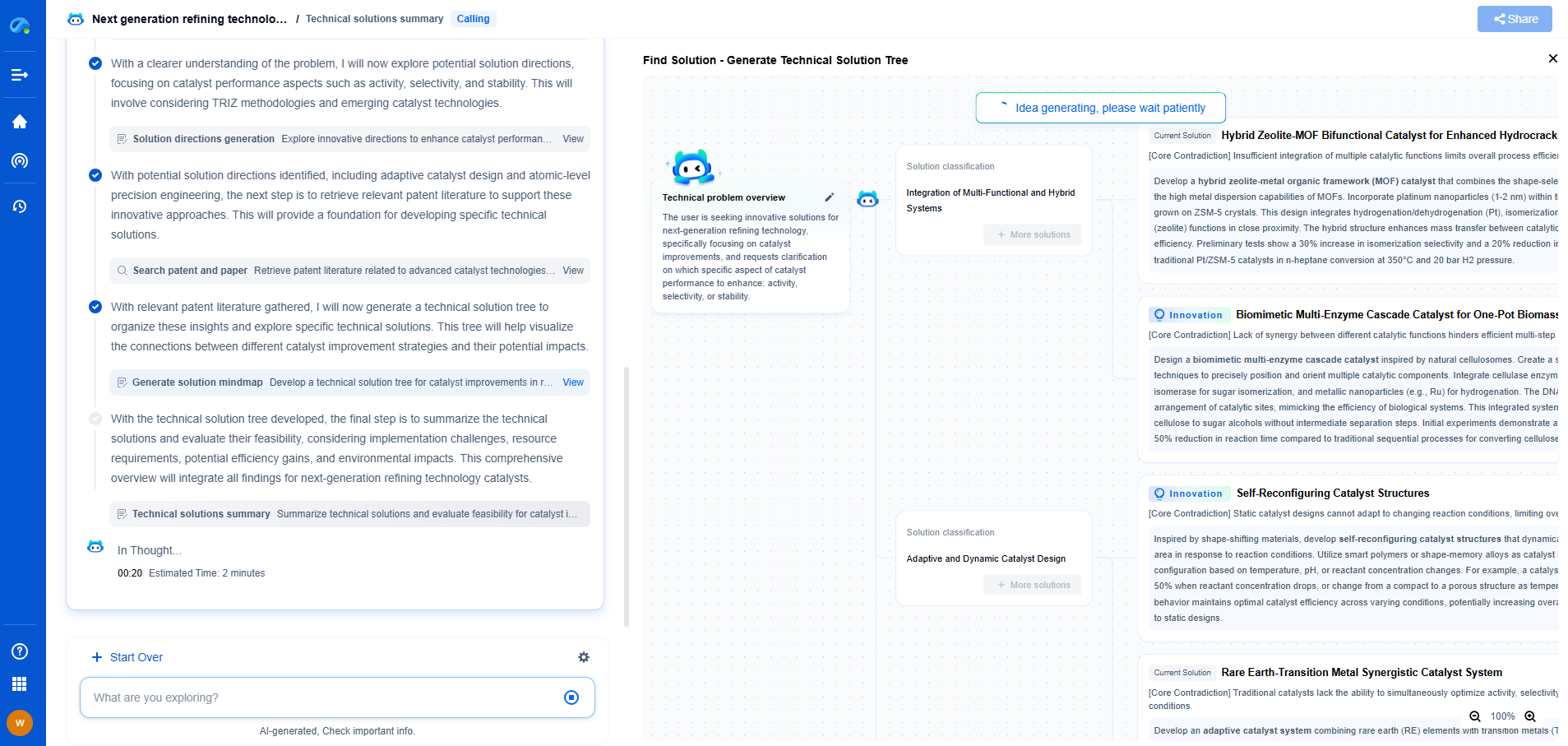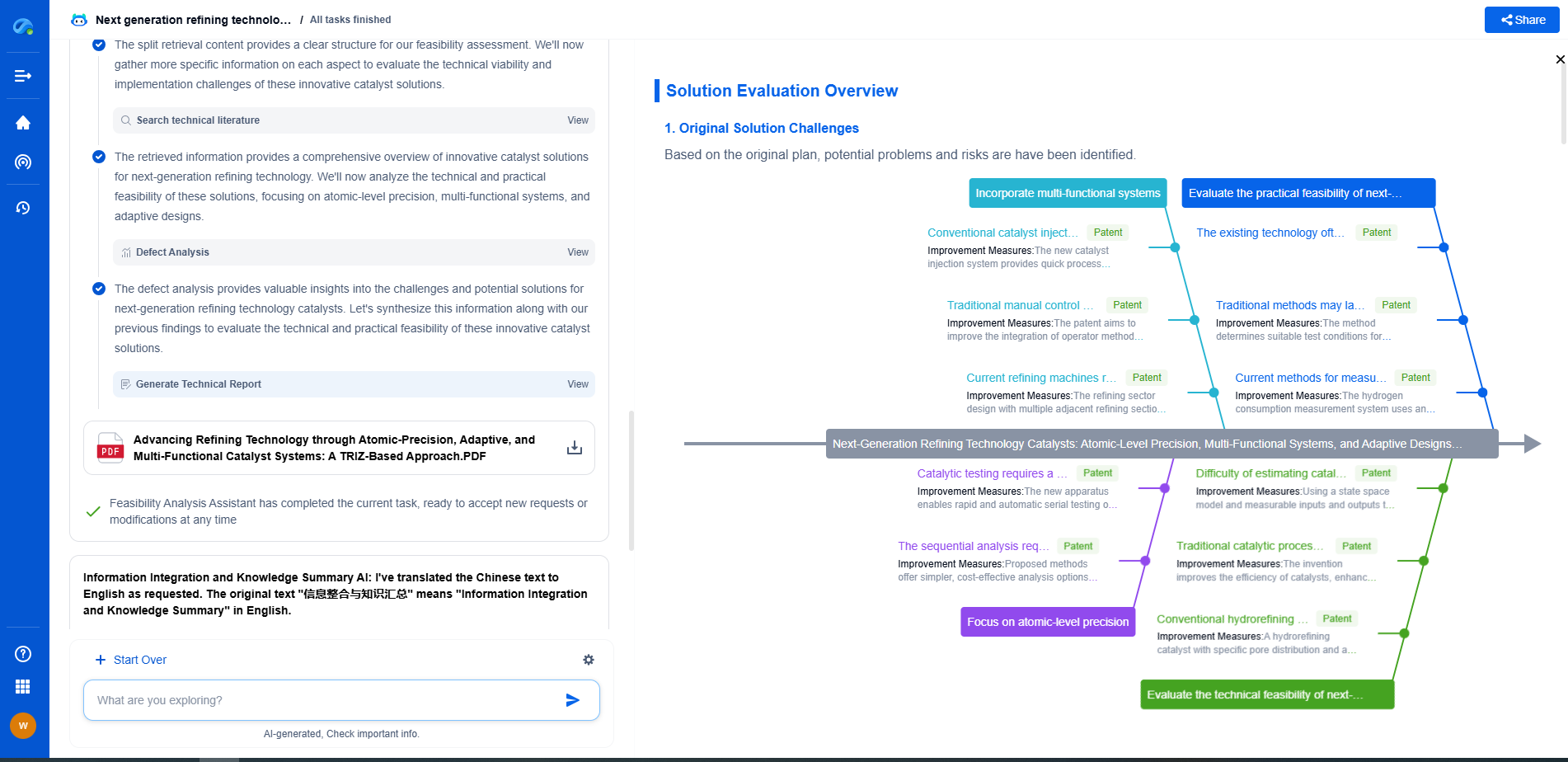Implementing HMI and Control Panels in Smart Buildings
JUL 2, 2025 |
In the rapidly evolving landscape of smart buildings, Human-Machine Interfaces (HMI) and control panels play a pivotal role in enhancing operational efficiency, user experience, and energy management. These technologies provide a seamless interaction between building occupants and the complex systems that regulate everything from lighting and climate control to security and energy use. In this blog, we will explore the implementation of HMIs and control panels in smart buildings, examining their benefits, components, and the considerations for their effective integration.
Understanding Human-Machine Interfaces (HMI)
Human-Machine Interfaces act as the bridge between users and the building's automated systems. They allow users to monitor and control various building functions through intuitive dashboards, touch screens, or mobile applications. HMIs are designed to present complex data in a user-friendly manner, enabling building occupants to make informed decisions about their environment.
The primary purpose of HMIs in smart buildings is to simplify the interaction between humans and technology. Whether it’s adjusting the temperature, managing lighting systems, or overseeing security protocols, HMIs allow users to perform these tasks efficiently and effectively. By streamlining these interactions, HMIs contribute to the overall goal of creating more comfortable and energy-efficient building environments.
Components of Control Panels in Smart Buildings
Control panels are the backbone of smart building operations. They integrate various subsystems, including HVAC, lighting, security, and more, to provide centralized management and control. Modern control panels are equipped with sensors, processors, and communication modules that facilitate real-time data collection and decision-making.
A standard control panel typically includes:
1. Sensors: These devices gather data on environmental conditions, occupancy, and other variables.
2. Processors: They analyze the data collected by sensors and execute pre-programmed instructions to optimize building functions.
3. User Interface: This component allows users to interact with the system, providing feedback and control options.
4. Communication Modules: These enable connectivity between the control panel and other building systems, often leveraging Internet of Things (IoT) technology.
Benefits of Implementing HMIs and Control Panels
The integration of HMIs and control panels in smart buildings offers numerous advantages:
1. Energy Efficiency: By enabling precise control over building systems, these technologies help reduce energy consumption and lower operational costs.
2. Enhanced Comfort: Occupants can customize their environment to suit personal preferences, improving overall comfort and satisfaction.
3. Increased Security: Advanced control panels enable real-time monitoring and management of security systems, enhancing building safety.
4. Data-Driven Insights: HMIs and control panels collect vast amounts of data, providing valuable insights for building management and future planning.
Considerations for Effective Integration
Implementing HMIs and control panels requires careful planning and consideration. Here are some key factors to consider:
1. User-Centric Design: The design of HMIs should prioritize ease of use and accessibility to ensure all building occupants can interact with the systems efficiently.
2. Scalability: The chosen systems should be scalable to accommodate future upgrades or expansions in building operations.
3. Interoperability: HMIs and control panels must seamlessly integrate with existing building systems and technologies, ensuring smooth operation and data exchange.
4. Security: With increased connectivity comes the risk of cyber threats. It is crucial to implement robust security measures to protect sensitive data and systems.
Conclusion
The implementation of HMI and control panels in smart buildings represents a significant advancement in building management technology. By facilitating efficient interaction between humans and machines, these systems not only enhance energy efficiency and occupant comfort but also contribute to a more sustainable and secure built environment. As smart building technology continues to evolve, the role of HMIs and control panels will undoubtedly become even more integral to the design and operation of modern buildings.
Ready to Reinvent How You Work on Control Systems?
Designing, analyzing, and optimizing control systems involves complex decision-making, from selecting the right sensor configurations to ensuring robust fault tolerance and interoperability. If you’re spending countless hours digging through documentation, standards, patents, or simulation results — it's time for a smarter way to work.
Patsnap Eureka is your intelligent AI Agent, purpose-built for R&D and IP professionals in high-tech industries. Whether you're developing next-gen motion controllers, debugging signal integrity issues, or navigating complex regulatory and patent landscapes in industrial automation, Eureka helps you cut through technical noise and surface the insights that matter—faster.
👉 Experience Patsnap Eureka today — Power up your Control Systems innovation with AI intelligence built for engineers and IP minds.
- R&D
- Intellectual Property
- Life Sciences
- Materials
- Tech Scout
- Unparalleled Data Quality
- Higher Quality Content
- 60% Fewer Hallucinations
Browse by: Latest US Patents, China's latest patents, Technical Efficacy Thesaurus, Application Domain, Technology Topic, Popular Technical Reports.
© 2025 PatSnap. All rights reserved.Legal|Privacy policy|Modern Slavery Act Transparency Statement|Sitemap|About US| Contact US: help@patsnap.com

